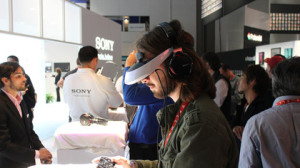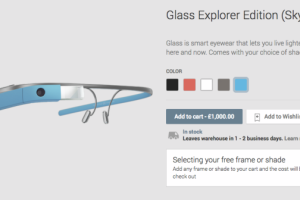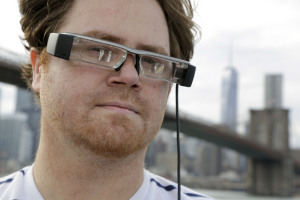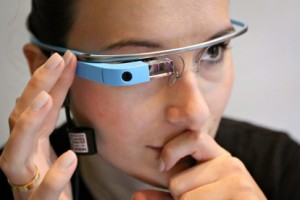8 best Augmented Reality Headsets
AR is getting ever more popular. Go Go Gadget glasses!
Google’s Project Glass is probably the most well-known of the new ‘smart glass’ products, but there are plenty more prototypes and rival products where that came from.
They promise to take us on a journey of discovery using a slightly predictable mix of web connectivity, GPS and smartphone integration at first, but in the long-term a whole new world of sensory enhancement beckons.
It might start with a few blokes in suits wandering around with a glorified Tom Tom strapped to their peepers, but you’ll be looking at the first cyborgs. SpecsSavers will never be the same again.
1. Google Glass Explorer Edition, approx £500
What’s on your Christmas list? They’re now in beta testing, but Google’s much-talked aboutProject Glass looks destined to deliver its first product – the Explorer Edition – before 2013 is out.
Users will be able to command Glass – already the colloquial term – to take photos and videos, search the internet and find directions using Google Maps, with the headset using Bluetooth to link up to Android and (even) iOS devices.
Google is promising a modular design in the wake of the Explorer Edition, so prescription glasses-wearers will be invited, too.
If you have a really, really packed life Google Glass could be a revelation. Or will everyone ignore each other, bump into one another, and constantly crash their cars? And will Google Glasses mainly show adverts? All will be revealed on what’s destined to be the real pioneering product. OK glass, we’re ready!
2. Vuzix M100, £TBC
After a few attempts at personal displays and TV specs, Vuzix may have cracked it with its upcoming augmented reality M100 smart glasses. With a processor equal to any smartphone, the M100 – shown-off at CES 2013 and now with app developers – comes equipped with a Full HD camera, WiFi, Bluetooth, GPS, a compass, and both microUSB and microSD slots.
Where the M100 differs from Google’s Glass is that the eyepiece itself – which has a 480×272 resolution – is not transparent, but fixed. So it’s not really augmenting reality, it’s adding to it; this is a smart ‘second screen’. Available in mid-to-late Summer.
3. Oculus Rift, £TBC
Is the Oculs Rift the current front-runner in the emerging world of virtual reality gaming headsets? A Kickstarter legend of 2012, Oculus Rift wowed the CES 2013 crowds with its ski goggle-esque design that’s innately friendly to specs-wearers.
From two internal screens come two images, each of 640×400 resolution, which together create a 1280×800 image. With built-in motion tracking to respond to the user’s head movements, it’s possible to physically turn and see a 3D environment appear before your eyes. It’s so good, it’s a rather unsettling and giddy experience at first, but soon feels natural, though the various games’ frame rates are a crucial factor.
A developer kit will be released in May, with a consumer product to follow, but already it’s got video-game makers Valve, Epic Games and Unity involved.
4. Oakley Airwave heads-up display goggle, £500
Another impressive, though half-baked attempt to pre-empt Google Glass, Oakley’s sports-centric effort at ‘performance optics’ is about smart stuff in both senses. Dubbed rather worryingly as ‘technology that delivers the goods straight to your brain’, Airwave is aimed primarily at skiers and snowboarders.
The tiny prism display is like looking at a 14-inch screen that’s five feet away in the user’s field on view; on it are read-outs for speed (current and maximum), altitude, the time, the battery level and even ‘air time’ – the length of your last jump. Clever stuff, though niche.
Based around an Android OS, Airwave also lets you change your tune (if you love the great outdoors, but hate how it sounds), and track both yourself and friends (a feature that’s meant for safety on the slopes, not so you can track them for the rest of their lives).
It links to a smartphone for calls and text messages, but that’s via a slightly messy wireless remote, which can be clipped onto the Airwave or worn on a wrist, but either way it’s a tad old-school when compared to the voice interaction and dictation imminent via Google Glass.
5. Sony HMZ-T1 Personal 3D Viewer, £700
The most elaborate personal viewer to reach the consumer market so far, this headset is about immersive 3D and even uses high-resolution OLED panels. A two-piece set comprising the 3D viewer itself and an HDMI dual output switcher, a single cable links the two, delivering sound, vision and power.
Any HDMI source can be connected, from a set-top box to a Blu-ray player, so this is best viewed as an alternative to a bigscreen TV or home cinema. The screen appears to be 750-inches in diameter, and mimics a ‘real’ cinema by tilting the OLED panels to emulate that big-screen effect.
By keeping out any external light, the illusion of a large screen is surprisingly convincing, and there’s genuine high definition clarity to be had. The refresh rate of OLED is lightning-fast (just 0.01 milliseconds) so there’s no blur or 3D crosstalk – and the sound quality is awesome, but it’s hardly flown off shelves.
6. EyeBorg Eyecam 3.0, £TBC
It’s resolutely a prototype rather than a finished product, but does EyeBorg represent the logical next step for smart glass?
It’s actually a rather basic idea; strap a wireless video camera and a transmitter to a prosthetic eye, and insert into an otherwise empty eye-socket. The ‘digital eye’ then sends a live video stream from a direct human perspective to a smartphone or computer.
OK, so Google Glass can probably film video from an almost identical perspective, and we can’t imagine (many) people will gauge their own eyes out to get an Eyecam, but, hey, it glows red in the dark! As an early slice of trans-human self-augmentation, the Eyeborg is, er, visionary.
7. Zeal Optics Transcend GPS Goggles, £300
With wearable tech so far dominated by sensor-based gadgets for runners like the Nike FuelBand and Fitbit, this is an early version of what’s bound to be an avalanche of smart glass apps for skiers and athletes.
This altimeter and GPS-powered Heads Up Display has SPPx polarized photochromic lenses to adjust to the light intensity on the slopes and lessen glare, but that’s just the start. It simultaneously shows the wearer a read-out for distance travelled, speed, altitude, stopwatch and temperature on a LCD display that appears to be about two metres away.
Après-ski, a USB slot lets you transfer activity data to a computer, and a Google Map. Jump on a few generations and add both smart glass and a 4G signal and we reckon the Transcend will tell the savvy skier what he/she really needs to know by showing a virtual red line on the piste that plots the course to the next vin chaud. Alternatively, such a system could help snowboarders from crashing into … everybody.
8. Epson Moverio BT-100, £700
Printers, projectors … and portable video glasses? An unexpected, though not particularly mind-blowing contribution to the genre comes from Epson, whose Moverio BT-100 is a decidedly first-gen attempt.
Aimed at frequent flyers who don’t want to either watch the terrible LCD screen in the seat or crane their necks at a tablet, the Moverio BT-100 essentially creates a 320-inch display for watching movies.
It’s got 1GB storage, a SD Card slot and runs an Android OS, though where it differs from other attempts at video-specs is its design; using smoked-glass that’s easily transparent, it’s possible to wander around while watching a film – though its enormous movie screen, while also transparent, creates a bit of a blind-spot.
Where it falls down is its lack of noise-cancelling headphones, which is a must at 40,000ft. The battery lasts for six hours.





